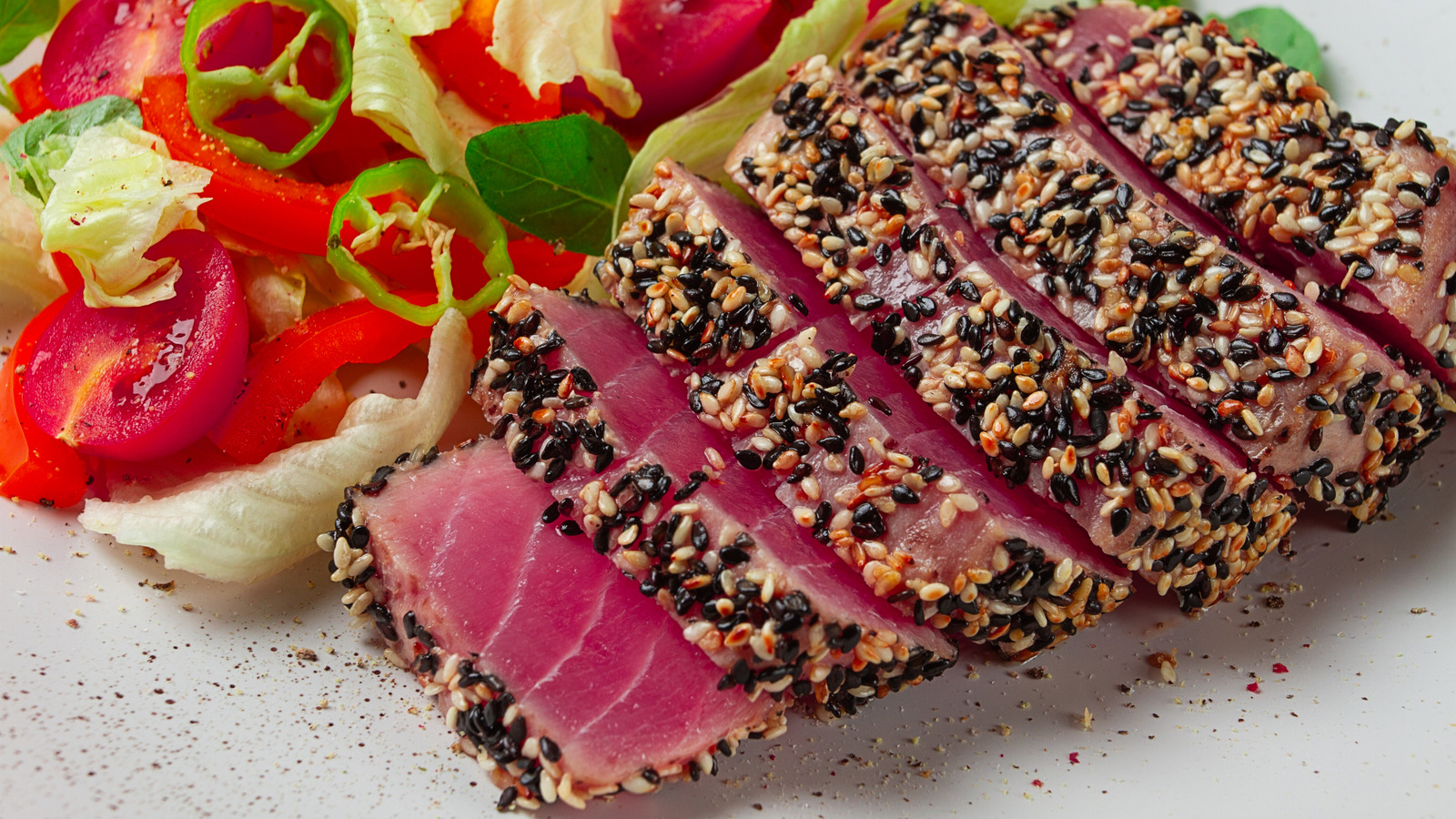We may receive a commission on purchases made from links.
Home cooks are often intimidated by the prospect of grilling a tuna steak and ensuring it comes out tasty. It’s understandable — tuna is more delicate than other proteins like beef or pork, and as such is prone to overcooking easily — especially as the best temperature for a tuna steak is somewhere close to rare. But knowing some common mistakes that cooks make, and how to avoid them, can ensure you get a perfect cook on your tuna every time. One of those mistakes — also a common error made when cooking beef steak — is not letting it sit out of the fridge to come up to temperature before cooking it. To find out more about why this step is so important and how long you should leave your tuna steaks out, we spoke to Mikaela Reuben, chef and author of the cookbook “Eat to Love.”
“Let tuna steaks sit out at room temperature for about 20 to 30 minutes before cooking,” she told us. “This helps them cook more evenly — especially important for a delicate protein like tuna, where you’re often aiming for a seared exterior and a rare or medium-rare center.” Skipping this step means you run the risk of an inconsistent cook. “Starting with cold fish can cause the outside to overcook before the inside is ready,” Reuben explained.
You won’t want to leave the fish sitting out for so long that it becomes unsafe, though. As Reuben said, “Just make sure the tuna isn’t left out for more than 1 hour to stay within food safety guidelines.”
Most fish benefit from sitting at room temperature before cooking
It’s often said that before cooking a steak, you should leave it out until it comes up to room temperature (or, around 68 to 72 degrees Fahrenheit). Proponents of this idea state that it helps the meat retain juiciness and cook more evenly. When cold protein hits a hot pan, it has a tendency to seize up, the muscle fibers contracting. While this isn’t the only contributor to a tough texture, it could result in a chewier outcome in some parts of the meat.
The same rule applies for tuna (and most other fish), Mikaela Reuben explained. “Most fish benefit from resting at room temperature for 15 to 30 minutes before cooking … ” she told us. “This helps promote even cooking by reducing the temperature difference between the center and the surface.”
According to Reuben, how long you leave your fish out to temper really depends on the thickness of the piece of fish in question. “For thicker cuts like tuna, salmon, or whole fish, aim for the upper end of that range. For thin filets like flounder, sole, or tilapia, 15 minutes is usually enough.” However, it’s important to take into consideration things like the weather and ambient temperature of the kitchen — if it’s scorching, your fish will likely go bad much faster. For the best food safety practices, Reuben recommends keeping the tempering time on the short end of the range if you’re in a particularly warm or humid kitchen. By following these tips for how to treat your fish before cooking, you’ll be on your way to delicious, homemade tuna steaks that are juicy, tender, and perfectly safe to eat.






